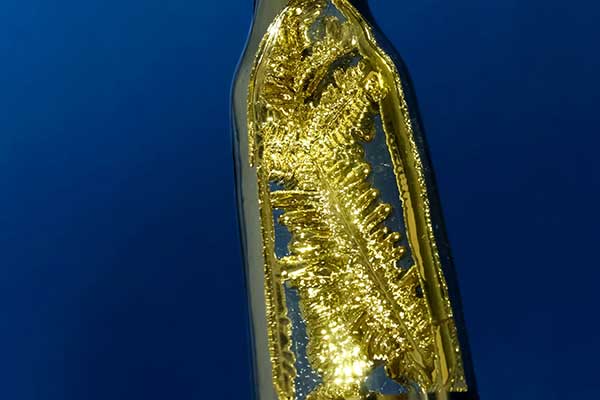Cesium, a rare alkaline element, was the first in a series discovered using spectroscopic techniques. The history of cesium dates back to 1846, when the German mineralogist Johann Friedrich August Breithaupt photographed rows of colored quartzites, which he called polarites, while studying minerals and ores on the Elbe. A small sample was analyzed by German chemist K. Plattner, who found nothing new, although he noted that the total mass of some particles was only 92. 75%. Unfortunately, the amount of mineral matter in his possession did not allow him to repeat the analysis and search for just over 7% of the missing mass. On the other hand, Plattner found that the polluted water contains high amounts of sodium and potassium in addition to silicates. Of course, as an alkaline metal, cesium has similarities to its neighbors, so Plattner was unable to determine whether the sample contained anything other than the known elements.

In 1860, R. Bunsen and G. Kirchhoff conducted studies on the substances contained in mineral waters. After the separation of calcium, strontium, magnesium and lithium from the mineral water sample of the Bad Dürkheim spa, the remains were subjected to spectroscopic analysis. In the spectrum, they observed two closely separated lines in the blue region of the spectrum. Although one of these lines almost coincided with the strontium characteristic line, the observed pattern did not correspond to any known element, although it was characteristic of alkali metals. Referring to the blue colour of the characteristic lines of the spectroscopic spectrum, the new element was named cesium from the Latin word Caesius, which means the greyish-blue shade of the lower sky.
On 11 April 1860, Bunsen wrote to his colleague Sir Henry Enfield Roscoe about his discovery, and on 10 May he sent a statement to the Berlin Academy of Sciences announcing the discovery of a new alkaline element. Over the next six months, Bunsen had 60 grams of caesium in the form of chloroplatin, which is an extraordinary achievement considering that 300 tons of mineral water had to be processed to produce that amount. As a by-product, he also received about a kilogram of lithium chloride. Separation of the cesium salt from mineral water was a complex and time-consuming process. A mixture of alkali earth metal salts (calcium, strontium, barium) was precipitated from the water as sulfates or oxalates, leaving in solution the salts of the first group metals. The solution was then acidified with nitric acid and extracted with ethanol to give sodium solution. From this solution, lithium precipitated with ammonium carbonate, and potassium, rubide and cesium precipitated as insoluble chloroplatins. Separation of the mixture of potassium, rubidium and cesium chloroplatates was carried out by fractional crystallization.
Rubide and caesium chloroplatate are less soluble, they first crystallize, leaving potassium chloroplatate in solution. After reduction of the hexachloroplatin salt with hydrogen, cesium and rubide were separated using differences in the solubility of these carbonates in alcohol. Finally, 9. 2 grams of rubidium chloride and 7. 3 grams of caesium chloride were obtained by treating 44,000 litres of mineral water. Four years later, Italian analyst F. Pizani began to study the contaminated material previously studied and analyzed by Plattner and found caesium in the quartzite under study. Carl Satterbeg obtained metallic cesium by electrolysis of a mixture of molten cesium and barium cyanides.













